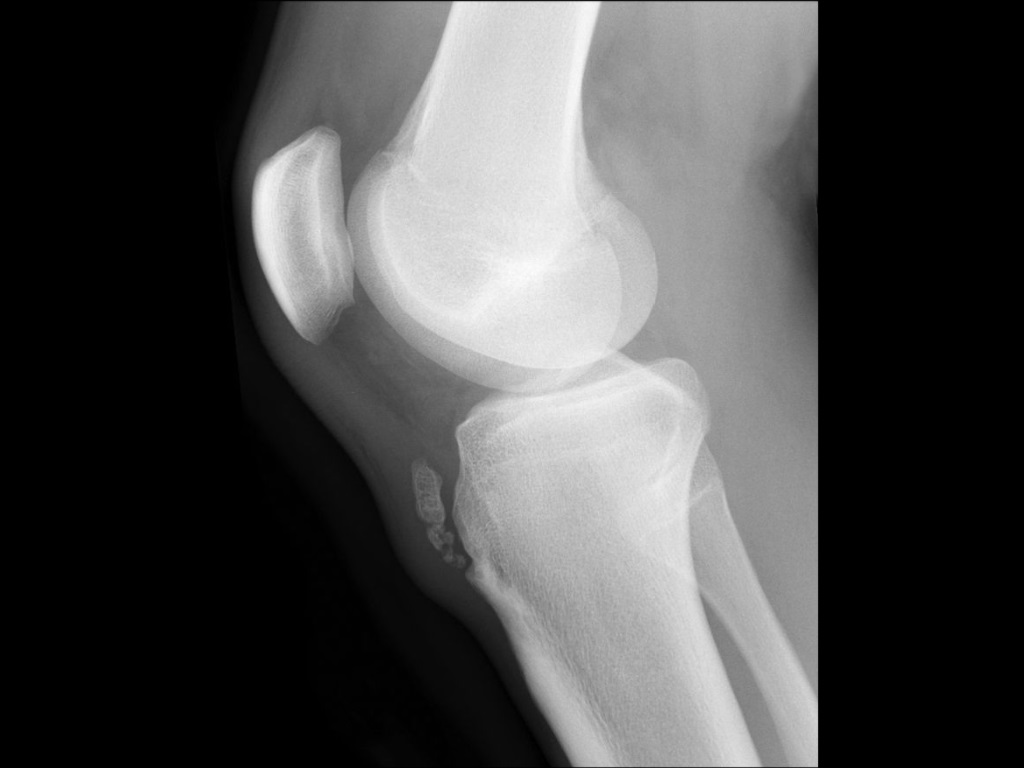Pathology
- Apophysitis at the tibial tubercle, the site of the distal insertion of the quadriceps mechanism (patellar tendon / ligament)
- Usually a chronic condition (may have an acute on chronic flare up)
- Repetitive high force through the quadriceps mechanism ie jumping (Basketball / Volleyball / Netball), in excess of what the body can recover from
- May be due to either flat out too much activity or activity with poor mechanics
Symptoms
- May have a prominent tibial tubercle
- On x-ray, may have a fragmented tibial tubercle, but usually this appears corticated
- Need to differentiate from tibial tubercle avulsion fracture:
- Acute fracture would not appear corticated
- Should still be able to straight leg raise with apophysitis (although may be painful to do so) but if the tibial tubercle is avulsed, this would usually not be the case
- Blumensaat’s line should be pointing to the inferior pole of the patella on a lateral knee x-ray
- Also on the lateral x-ray, the distance between the inferior pole of the patella and the tibial tubercle should be should be approximately 1.1 * patellar height

Management
- Relative rest – this is an overuse (or relative overuse) injury where there is excessive load from what body can recover from
- Sometimes there needs to be a period of complete rest
- Consider icing, possibly short term Zimmer Splint if highly irritable, simple analgesia, crutches
- If nothing else but a period of rest is undertaken and then return to exactly the same activity level without changing anything else, symptoms will often return.
- Factors that can contribute to this condition include:
- Muscular length
- Quadriceps
- Hamstrings
- Muscular strength / core
- Quadriceps
- Hamstrings
- Hip
- Poor biomechanics
- Foot mechanics
- Footwear +/- orthotics
- Often benefit from podiatry review
- Graduated return to activity
- Adequate rest in between sessions
- Patients doing multiple activities may need to choose the most important activity and cease others temporarily (or even permanently)
- May need to moderate activity in the long term
- Muscular length
